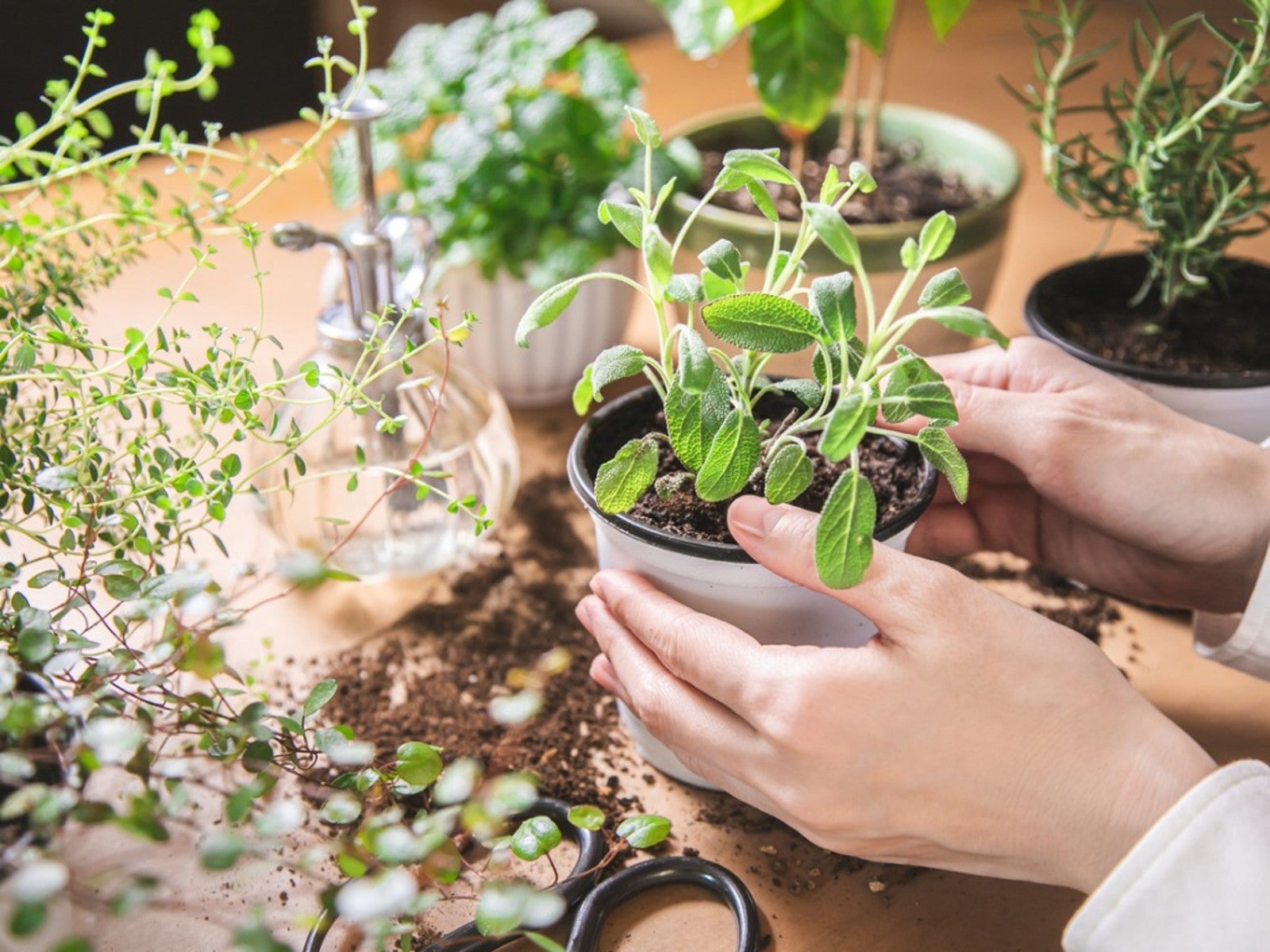Propagating Sage: How To Grow Sage From Cuttings And Seed


If you enjoy the distinctive flavor sage lends to culinary dishes, it's likely you grow this delightful herb in your home garden. Yet over time, sage plants tend to get a bit woody and need to be replaced. One of the best ways to acquire new plants is by propagating sage from existing ones.
Growing Sage from Seed
Whether you're adding sage plants to the garden for the first time or you need to replace woody ones, growing sage from seed might be your first thought. Sage plants can be started indoors in early spring or direct-seeded outdoors after all danger of frost has passed.
It's best to sow sage seeds thinly, then cover them with 1/8 inch (.3 cm.) of fine soil. Keep the area moist, but not soggy, as it can take two to three weeks for sage seeds to germinate. Once the seedlings have developed two or three pairs of true leaves, sage plants can be thinned or transplanted.
In comparison with other types of herbs, sage grows very slow. It can take up to two years for sage plants to reach maturity. Even under ideal conditions, it takes about 75 days to get harvestable-sized leaves when growing sage from seed.
Propagating Sage from Cuttings
Growing sage from cuttings is an easy method of propagation and can lessen the time it takes to grow harvestable herbs. Soft wood cuttings can be started throughout the growing season. Even if you don't have your own sage plants, you might be able to root and grow the fresh sage cuttings found on the herb shelf at your local grocery.
How to Propagate Sage from Softwood Cuttings
Step one: Cut or acquire 4 to 6 inch (10-15 cm.) long, fresh sage sprigs. Trim the stem directly below the lowest set of leaves, then strip the foliage from the bottom 2 to 3 inches (5-7.6 cm.) of the stem.
Step two: Place the sage stems in a glass of water and set it in a bright location. Change the water as needed to keep it fresh. Roots should begin emerging from the stem in about 3 to 4 weeks.
Sign up for the Gardening Know How newsletter today and receive a free copy of our e-book "How to Grow Delicious Tomatoes".
Step three: Once the roots are 2 inches (5 cm.) long, gently plant the sage cutting in soil. When growing sage from cuttings, it can take another 3 to 4 weeks for the plant to become established and for new growth to appear.
How to Propagate Sage from Hardwood Cuttings
Using pencil-thin hardwood stems is an alternative method for propagating sage from cuttings. Generally, hardwood cuttings are taken in the fall or winter when the plant is dormant. Select 4 to 6 inch (10 to 15 cm.) stems that have recently turned woody. Trim any green softwood from the growing tip end.
Next, remove all the leaves from the woody stem. If desired, a rooting hormone can be applied to the bottom of the cutting. Then gently push the woody stem into a pot of moist soilless medium. A mix of perlite, peat moss or sand works well.
When propagating sage with a hardwood cutting, the roots develop over the winter. New growth appears in the spring when the plant breaks dormancy. The new sage plants can be transferred to the garden when all danger of frost has passed.

Laura Miller has been gardening all her life. Holding a degree in Biology, Nutrition, and Agriculture, Laura's area of expertise is vegetables, herbs, and all things edible. She lives in Ohio.